Will You Go for a YOGA Match?
The international Regulation for the YOGA competitions, as stated by the Sportive Yoga International Federation
by Maria Nicola
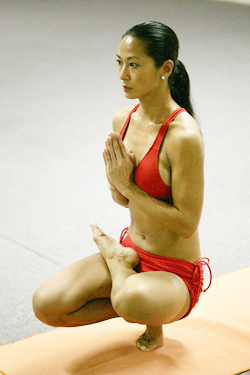 Before reading this column, please go carefully through the following simple test. Tick the correct answer for each question, one single choice required, whether A or B.
Before reading this column, please go carefully through the following simple test. Tick the correct answer for each question, one single choice required, whether A or B.
1) YOGA is:
A. An ancient spiritual science
B. A historically confirmed sport since 2000 years ago
2) The traditional branches of the YOGA system as stated in the ancient yoga treatises:
A. HATHA YOGA, KARMA YOGA, BHAKTI YOGA, JNANA YOGA, RAJA YOGA, TANTRA YOGA, LAYA YOGA etc.
B. acrobatic YOGA, artistic YOGA, rhythmic YOGA and ASANAS YOGA
3) The yogi pursues spiritual achievement through:
A. Constant individual practice of proper spiritual training
B. Attending sports competitions
4) YOGA techniques are bound to:
A. A yoga mat
B. A 6 x 6 metres square
5) YOGA ethic and moral rules (YAMA and NIYAMA) must be observed:
A. Always
B. During predetermined periods, such as competitions
6) JNANA YOGA (knowledge YOGA) is:
A. a form of YOGA which enables achievement of spiritual liberation through metaphysical knowledge:
B. a general knowledge reference about the yogic tradition
7) The level of spiritual achievement is related to:
A. The subject’s actions and realizations
B. A smiley carefree face
8) You can become an experienced spiritual Guide:
A. with the achievement of a certain spiritual experience
B. 12 years after the master graduation in YOGA
9) The HATHA YOGA practice is performed:
A. In silence
B. To music
10) For practicing the yogic body poses, ASANAs, we have:
A. To maintain each pose at least 3 minutes, then focus on the effects of the pose
B. To perform as many poses as possible in 2 minutes, with quick shifting and no break between.
Interpretation of the results
Please count the A and B ticks.
For 10 A ticks, we apologize, but we are hardly in position assess your Yoga knowledge. Whether you have read one single article or 100 books about YOGA, whether you are a beginner, or you are extremely wise, or you have minimum intuition and common-sense. You have answered the right answers to all questions, but since these are basic questions, this is not big performance.
If you have ticked both A and B, the more the B, the more we are sure you have laughed at this test.
Instead, if you chiefly ticked B answers (between 7 and 10) we are positive that you are a member of the “Sportive Yoga International Federation”. For 10 B answers you must be one of the officials in this organization.
*****
Mockery at a millenary spiritual practice
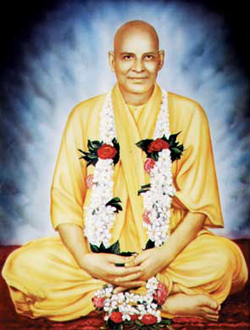 Yoga has a complex and fascinating history of its own. India, Nepal and Tibet are teeming with legend figures.
Yoga has a complex and fascinating history of its own. India, Nepal and Tibet are teeming with legend figures.
Great spiritual giants Milarepa, Babaji, Padma Shambava, Lalla, Ramakrishna are just few names who arouse the aspirant’s imagination, due to their spiritual trainings (tapas) to their exceptional achievements and paranormal powers, but mainly due to their exemplary lives devoted to God. We may not even know the greatest yogis of all times as they have lived in solitude, fully committed to spiritual asceticism.
Yogic tradition is quite rich and various. There are extremely old treatises to found this complex and vast science. Despite this variety, all YOGA forms are unitary and all yogis certainly have a lot to share. There is quite an amazing coherence of this traditional system, whose practical secrets only conveyed orally along centuries. One of the most outstanding features of this system is the tolerance, meaning openness and lack of dogmatism – great yogis have never stated that YOGA is the only spiritual path or there is one single form of YOGA fit for all people, and they have never pretended to be the only ones able to teach YOGA.
As for competitions, there is no question in the yoga treatises or in legends. Sometimes, different kings would invite several wise men to the court and organise philosophical disputes. Seldom would great yogis display their paranormal powers, as it happened in the famous Tibetan yogis confrontations against the Bon religion representatives, in order to convince them to quit black magic.
Nowadays instead, competition and intolerance have been naturalized even in YOGA. The Sportive Yoga International Federation stated:
“Yoga Sports was born approximately 2000 years ago. Originally comes from India. From its very beginning, Yoga Sports has been, above all, spiritual competition among the various philosophy schools and monasteries in India. This art was devoted to ancient deities as well as happened in Greece with Olympic Games.
As a sport is basically founded on spiritual education. Mental and physical techniques are only taken into account if the control of human spirit has been attained.”
(NOTE. To enable easier reading of this article, all references from the Sportive Yoga International Federation Regulation are rendered in red.)
We can hardly explain what exactly the Sportive Yoga International Federation means by “control of human spirit”, which, in their opinion should be attained before the yogi aspirant deigns practicing the simplest yoga techniques!
Sport or spiritual path?
Since an approach of YOGA as a sport is completely inadequate and hardly plausible, the authors of the “Yoga Sports” regulation consider a definition for sports as necessary, which is quite an exotic one:
“Sport is every ruled play, under regulations that include competition between two or more persons. Every competition or sport shows whether a human being is competent in several skills, talents, techniques, strategies, tactics or other competition way, evaluated from physical, mental, spiritual, social, ethological and ecological point of view. Sport is Life itself teaching, since life is competition second to second.”
Basic question: which is the specific way to assess the spiritual features of the box players? What about the ecological behaviour of the football players? But we would better stay apart from any comments versus these plain aspects, as we were arrested by an amazing thing: ethology. It is a less known science (do not take it for ethnology), and reference is made several times in the international regulation of the “yoga sports”, it is a science to study the behaviour of animals as a branch of… zoology! As part of psychology, ethology studies the human instinctive behaviour by comparison to animals and mainly assesses the primary propensities.
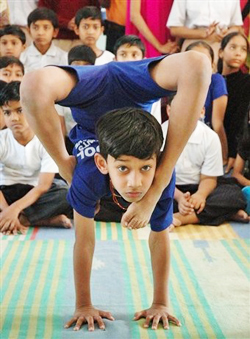 The YOGA game
The YOGA game
Quotation from the same regulation:
“Definition of the Play: Yoga Sports
Yoga Sports is a spiritual discipline that values spiritual education of human being and his control over sensations, emotions, passions and feelings. Awarding spiritual intelligence of Human Being, evaluating it through affective and emotional intelligence during play performance, for each competitor, technician and trainer.”
“Play Objective: Yoga Sports
Yoga Sports objective is individual spiritual realization, using competition as a self-improvement mean and as spiritual training towards the obstacles that we daily find in our path through life. Yoga Sports aim to achieve development of spiritual intelligence, affective intelligence and emotional intelligence of human being, during the competition, facing negative situations that might cause dissatisfaction, anxiety and stress. Each competitor is trained mostly spiritually despite the mental and physical training, Yoga Sports uses the yoga techniques contest as a mean and the ultimate aim is the spirituality.”
Yoga distorted into sport in order to get financial support
Before any further assertion there are several things to be explained, mostly for those who might think that we make this evaluation just for the sake of it. How comes this obsession for yoga sports? Why all these distortions and contortions to concoct another sport discipline? The reason is simple: sports normally enjoy good financial support, or, anyway better than spirituality. A spiritual school labelled as public institution is plain imaginary these days, but sports are utterly in as prevailing mean to entertain people. And a certain sport declared Olympic is sponsored by governmental funds.
Therefore this is the “innovative” plan of some patrons in pursue of solutions for financial support for yoga schools and related activities such as organising international activities, congresses, travels sponsorship etc. Here are the preliminary stages:
– drafting a regulation for the yoga “game” and competitions
– yoga is declared a sport
– National Federations are set up in as many countries as possible and than international federations
– competitions are organised according to this regulation
– after due number of competitions organised, the respective sport is submitted to the Olympic Committee to be declare an Olympic sport.
For more of a “sportive tinge”, with a complete plunge in ridiculous, the amateurs and professional categories are stated – where professional would mean the competitors who take part into competitions and play this game for money, which makes us think whether there still exist any amateurs in the world. Since 2007 there have been organised the “World Cup” in “yoga sports”, for professionals.
We do not mean any disagreement to sports, or any critic versus sports, sport competitions, sportsmen and regulations. We cannot but notice that generally sports do have a certain meaning. Take basket, things are very clear with scores and game regulations. The goal is to score as many baskets as possible. In athletics, the winner is the best runner. For football, hockey, handball the final score counts all the goals during the game. After all, if two dozens of people may run after a ball just to pass it on as soon as they reach it, it just their business…
Obviously, it is possible to figure out many ways to organise YOGA competitions with different tests and scoring. We do perfectly agree to the idea that periodical competitions can emulate the aspirants with remarkable examples. We do know that competitions do not only go with sports, but they also exist in other fields, such as mathematics, physics, literature and in artistic field… But we flat out disagree that competition is a way to attain spiritual achievement and these competitions must be organised as the sports competitions.
Back to the “strategy” above, there are some problems that spring out since the beginning. Since YOGA is no sport, how could they concoct yoga matches or plays? Which could be the goal in this sport? Is it individual or in teams? What is the scoring? The issue for those who defined the concept of “yoga sports” is that once they stated a set of rules, to make a sport from YOGA nobody should “play yoga” in other terms than as stated in their regulation. This means, whether we play yoga in areas of 6m squares, or we don’t do it at all!
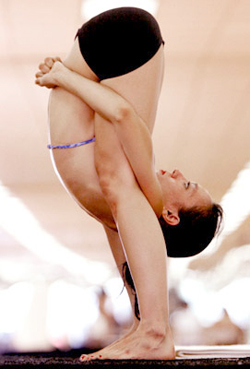 Which are the “YOGA sports”?
Which are the “YOGA sports”?
Any beginner in yoga learns that there are several branches in the yoga system. HATHA YOGA, BHAKTI YOGA, JNANA YOGA, KARMA YOGA, TANTRA YOGA etc. Each of them provides specific means if spiritual training and can lead to spiritual achievement. But for “yoga sports” they say no more no less than spiritual achievement is due to “yoga sports” competitions with four disciplines. The “yoga sports” regulation states that Yoga Sports have four Branches, Styles or Modes:
1. Athletic yoga sport
2. Artistic yoga sport
3. Rhythmic yoga sport
4. Yoga asanas sport
It’s remarkable the obsessive reiteration of the word “sport”. Would anyone think of such statements as: “The most famous ball sports are the football sport, the volley sport, the basket sport, the rugby sport…?” or “I’m watching the world sport competition of artistic figureskate”? Linguistically all these are pleonasms. And this is because everybody knows football, volleyball, tennis, skating as sports!
Logically, the conclusion would be that “yoga sports” are anything but yoga! Apart from the natural outrage that this concoction may bring about, we may say in the spirit of yogic tolerance, let them deal with their “yoga sports”, whereas we keep dealing with YOGA.
Some like it sport
You might be a sportsman. You might be after sports, just a viewer. You may find normal the strictly physical approach of the YOGA system, as physical training (there are many sportsmen who use YOGA techniques to enhance their performances). However “yoga sports” can hardly provide this. As yogis, with significant practical experience, we can grant that, should you practice such a degenerated form of yoga you will fail the great effects of YOGA! Just in terms of theory, after all the contortions meant to ape yoga into a sport, the regulation obsessively reiterates that physical aspects are less important in the competitors’ results.
The four “yoga sports” are unclear differed from each other, as follows (regulation reference)
1) in „athletic yoga” stress must be laid on the correct execution of some difficult yogic poses (usually there are quite complicate and contortioned poses, far from being the most important yoga poses);
2) „artistic yoga” requires two minutes program performed to music, consisting of a sequence of body poses inspired from the yogic asanas (the contestant goes from one pose into another)
3) the „ rhythmic yoga” sport resembles to artistic yoga, but it is played in couples or groups which are supposed to perform in perfect symmetry and synchronicity their artistic program;
4) the „yoga asanas” sport consists in several rounds of ASANAs performed by several competitors, where the winner goes for the next round.
The height of ridiculous is reached in the assertion that YOGA is a “spiritual” and not physical sport, after they have reduced it to a simple sport. Quotation from the official international regulation: “The Athletic yoga evaluates the perfect execution of an asana. Perfect alignment, strength, balance, resistance and accurate flexibility range. Perfect pranayama execution (energy control) and adequate breath or swara yoga.The achievement of Pratiahara (introspection), Dharana (concentration) and if possible a meditative state (Dhyana).”
A bunch of yogic terms, but no meaning!
Beware the ostentatious use of some particular yogic terms, as they have no support. SWARA YOGA is a secret form of YOGA, which does absolutely not refer to “energy control” and has nothing to do with the execution of the yogic poses and, just as the control of the subtle floods are not evaluated and objectively scored in such competitions where no PRANAYAMA techniques are practiced, but only ASANAs. Actually we are going to see herein that the level of inner focus and concentration is estimated by the prevalence of a serene, smiley face. But we would better go on with definition of the “athletic yoga” sport.
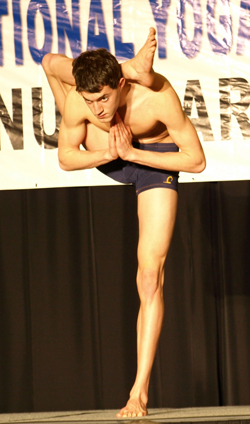 “Spirituality : The competitor cannot be nervous, distressed, anxious. To show calm, harmony, happiness or joy make the competitor to obtain higher marks.
“Spirituality : The competitor cannot be nervous, distressed, anxious. To show calm, harmony, happiness or joy make the competitor to obtain higher marks.
These spiritual states are more valuable than physical skills such as flexibility, strength, resistance and balance.
The attitude is also evaluated, the right attitude and the competitors’ acts (karma yoga) where the person complies with his dharma (duty) without expecting a benefit or result. If the competitor is worried or anxious for the result, he loses the contest.”
Apart from the slightest disregard of the states of calm, harmony, happiness and joy we dare stress that it is not the look that measures them, and we doubt the objectiveness and righteousness in scoring such subjective aspects in a competition which claims rigor. However these states are not a complete definition for spirituality. Why no reference to aspiration, will, courage, wisdom, detachment, love, compassion, generosity, discrimination? Can we figure out a truly spiritual being who lacks love? And which is the measure for love? Is it a round face or the wet dreaming eyes? Here is the masquerade emerging from the attempt to reduce a spiritual system to the level of sport, when claiming that physical aspects are ignored in favour of the spiritual ones! Saying that KARMA YOGA is a contestant’s performance in a competition is nonsense. KARMA YOGA implies unconditional action for the others. It is completely ridiculous claiming that you take part in a competition without pursuing to win, for you are detached from the results. How will the jury estimate that yoga sportsmen, whether amateurs or professionist accomplish their own DHARMA, i.e. their spiritual mission?!
„Artistic Yoga” and „rhythmic yoga”
“The Artistic Yoga is made of kramajis or asanas series that should be performed as a flowing sequence.
Besides the issues mentioned for Athletic Yoga, here is added the music, the attire, natural artistic qualities, general elegance, performing rhythm and the breathing rhythm.
The asanas sequence is performed to the rhythm of a music chosen by the competitor with proper criteria (good taste).
The asanas are linked with harmonious movements to connect them. The links should be the shorter movement to connect with next asana in the minimum time.
The competitor must show his spirituality and happiness while performing his vinyasa.
It is of fundamental importance that the competitor shows spirituality and the joy of movement in his performance.
The competitor should try to achieve a relationship of sympathy and empathy with the public and the jury.”
After the thorough description of the first two branches, the other ones are barely given a short reference:
“Rhythmic Yoga is played in couples, working on a mirror base (they both perform the same asanas, in the same range and with synchonicity) and keeping all the issues described for Artistic Yoga Sport.
YOGASANAS SPORT
It is a sport related with Yoga Sports
The Yogasanas Sport is based in the building up and execution of Yoga postures, performed to the maximum of flexibility, strength, balance, alignment and resistance.”
Short explanations of the terms: VINYASA, the reference for “artistic yoga” here has nothing to do with the traditional significance of the word. In YOGA, it means dynamic exercises which imply a series of poses performed through breathing synchronisation. The most famous exercise in yoga is the Sun Greeting. As subsequently extended in the popular fitness practice promoted in the West instead of genuine yoga, simple yoga poses are practiced in sequence for 1-2 minutes each (while counting the breathing) and poses are shifted from one to another. Such exercises are recommended for beginners and spread as fitness technique.
KRAMIJI is a derivate from KRAMA, which mainly applies in uttering long mantras, or long religious hymns. They are said to be efficient only if uttered in adequate intonation and synchronised to the breathing. Neither VINYASA nor KRAMA has nothing to do with performing an artistic program inspired from the yoga poses. Such an execution decreases the efficiency of the poses and from yogic perspective, it is nothing but an erroneous execution.
YOGA and gymnastics
Obviously, the yoga sports regulation exploits a minor similitude to gymnastics – but there they have tests, equipments, required figures. Gymnasts are supposed to run, jump, work on equipments… there is nothing like yoga. The idea of “rhythmic yoga” would look like synchronic swimming. No matter how we deal with it, things are twisted and no competition regulation emerges. And it is all due to their ambition to turn YOGA into a sport! Such an artistic program combining yoga poses seems entertaining, we may enjoy it! But this is not YOGA!
Now, after we cleared up the “yoga sports” games we obviously need to assess matches and competitions. We need to know about a playing area and about scoring. The regulation provides:
“PLAYING AREA
Dimensions: the field is a square of six meters of side. The space is a free zone, without any obstacles (can be a gym or a theater)
Surface: The surface should be flat, horizontal and uniform. (The floor can be wood, rubber or cement)
The surface should offer no injury possibilities for competitors. It is forbidden to play in rough of slippery surfaces
Indoor and outdoor fields are allowed.
Lighting: The are should be well illuminated to allow the jury’s job.
Music: Sound system, CD player or musicians (live performance) for Artistic Yoga and Rhythmic Yoga, a maximum of two minutes for each performance.
Table: The table should be placed over one side of the 6 x 6 meters square. The referee will stay there, he should be able to see the competitor and the marks given by the judges.
Seats: Chairs should be placed on each angle of the 6 by 6 square, one for each judge. Judges should be able to watch the competitor and the referee.“
Competitors allowed
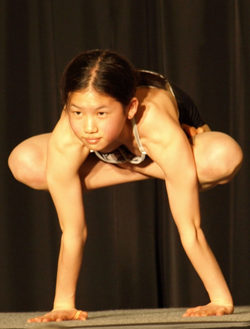 In case you have not been disappointed so far, and you are eager to know more, it’s time to hear that “Only the competitors registered by their trainer can take part in the competition.”
In case you have not been disappointed so far, and you are eager to know more, it’s time to hear that “Only the competitors registered by their trainer can take part in the competition.”
Individual, couple, teams or groups performances are allowed in feminine, masculine or mixed contests. Competitors can even be assigned to different age cathegories:
“International Yoga Federation establishes the following categories for Yoga Sports:
• Baby 4 to 5 years
• Baby Kids 6 to 7 years
• Kids 8 to 12 years
• Juniors 13 to 17 years
• Youngers 18 to 25 years
• Youngers adults 26 to 35 years
• Adults 36 to 40 years
• Veterans 41 to 60 years
• Seniors 61 years or more
You may thimk that there must have been the hundreds of competitors attending the competitions that have led to such distribution. In the annual competitions organized for each yoga class in our YOGA School hundreds of persons used to compete for each yoga class, which was more than one thousand persons per each competition. Maybe the Yoga Sports Competitions encountered simillar situations, who knows! Take their World Championship in Mexic 2007, for instance. There have been 20 competitors for all branches, all age catheories and for both sexes; out of which 17 women and 3 (that’s right, 3) men for all age cahegories.
Scoring in “Yoga Sports”
Looking through the regulation, we are finally delighted to read the first thing that we fully agree to: competitors must be barefoot. There follow some sophisticated explanations about the competitors and trainers obligations, including the place they can take in the hall. Now let’s do the serious work. The match can begin, how do we score?
Accoring to the individual performance, each competitor shall get a score, 10 points at the maximum. The winner will be the one who scores best, in case there are two contestant filling the same score for the first place, the jury is due to assess which one deserves the first price. Regulation states SCORING IN YOGA SPORTS:
Final evaluation: ten (10) points:
• Physical performance evaluation: (1 point).
• Mental performance evaluation: (1 point).
• Spiritual evaluation: (4 points).
• Social evaluation: (1 point).
• Ecological evaluation: (1 point).
• Cultural evaluation: (1 point).
• Philosophical knowledge evaluation: (1 point).
We have questioned around and we heard from people who have been to such competitions that there is no question of such scoring. Obviously the jury assesses the scores, but how could they make such a sophisticated and bizarre evaluation? Not that we mind it… but since they deny us to organize YOGA competitions under different regulation, there should exist at least some continuity.
Basically, this regulation sates that each contestant will perform 2 minutes program and according to his presentation refrees will assess:
“The competitor is evaluated spiritually, physically, mentally, socially, etologically, ecologically, cultural and also his philosophy knowledge. This is, in all Yoga aspects as a discipline basically spiritual.
Once evaluated the physical, mental and spiritual attitude and talents of the individual, he is evaluated in his social attitude and then he is also evaluated for his cultural and philosophical knowledge of this discipline for life.” We are stunned.
Obviously, there is a way to do it. First of all the contestant is evaluated for his attitude and physical, mental and spiritual atitude, then it’s the social evalutation. Next, it’s his cultural and phylosophical knowledge about “this discipline for life”, we suppose they mean YOGA. In fact, it’s all nonsense. They try to prove that there is an objective and rigurous scoring system and also highlight that “It should be regarded that despite a person can be extraordinarily flexible and shows incredible postures, he only gets 1 point. To win, the competitor should live and know Yoga philosophy and spirituality. Concentration gets also 1 point but his spirituality can score as much as 4 points.”
Therefore, the main objective aspect in a competition requiring YOGA poses performances only scores 1 point, the rest of it is an arbitrary and subjective decision. Wouldn’t that be frustrating? Maybe this is why the regulation insists that competitors who show disagreement to the (irreversibly subjective) decisions of the jury will be punished.
Basically remember that the jury (the refrees and the linesmen) will be watching all along the competition, not only during, but also before and after the contest. Here are the aspects subject to scoring as the regulatin provides:
AHIMSA: the competitor cannot show before, during and after the event any kind of violent or aggressive attitude, criticism, disappointment, annoyance or disapproval sign, not physical, mental, verbal or spiritual to other competitor, trainer, jury, audience, animals or plants. Not even objects should receive any rude or destructive handling by a competitor.
Remember that competitiors are also supposed to treat with love even insects!
MAITRI: The second feeling that is positively evaluated is Friendship or Maitri to every living being present at the event.
There should be a friendly feeling, cooperation and solidarity towards mates, opponents and the jury..
No one can show dislike, lack of sympathy to jury or opponents.
The competitor should understand that is a play, he cannot answer in a bad manner to relatives, public, other competitors or to the jury. He cannot show gestures of dislike, disapproval or enmity. Their relatives, friends and fans cannot show bad manners either.
MUDITA: Happiness and joy feeling is positively evaluated. It is very important to be happy, enjoy the fair-play as a party and celebration.
The competitor as well as the trainer cannot show or have a expression of unhappiness, indifference, depression, anxiety, stress, anguish or any other negative feeling
EMOTIONAL AND AFFECTIVITY INTELIGENCE: The ability of not having negative emotions and the faculty to understand others’ feelings.
The ability of generating basic altruistic feeling of Compassion, Karuna for others.
Ability to enjoy and have fun with the Play and with Yoga.
YAMAS and NIYAMAS: Yamas and Niyamas should be practiced before, during and after the competition (one hour before and one hour after). This is quite exhausting!
The flexibility, in its ten grades, is evaluated in the asanas execution, also the static balance resistance, strength resistance and the correct alignment for each yoga posture.
For Artistic and Rhythmic yoga sports, best scores are for coordination, rhythm, charisma, art, creativity, music and scenography. Actually out of the 10 points, yoga is left just 0,4 point. The rest is imagination.
Mental Score
“The introspection, attention, concentration, contemplation and meditation ability of the competitor, during the contest, are awarded.” Given the minimal duration of the executions, 20-30 seconds at the most, we wonder whether yoga sportsmen do know the definition of mental concentration and yoga meditation.
Social Score (1 point)
Tolerance and integration with others are awarded, as well as the comradeship, integration with groups and organisms, rules comprehension and rules respect..
Competitors cannot criticize, claim or interfere with the jury or referee decision.
Eto-ecological Score (1 point)
The correct ecological behavior and environmental respect are awarded.
The competitor cannot smoke, drink alcohol, get drugs or psychoactive drugs, throw papers or litter in the place of the event and the surrounding areas. He should leave everything tidy and clean. He cannot break or move anything.
Etologically, he must respect animals, respecting even insects. He cannot kill of mistreat any kind of animals or plants during the event.
The person who helps to keep everything clean and tidy, not destroying or harming living beings and objects, he is awarded.
Cultural Score (1 point)
The competitor should understand and accept without criticize, the culture, religion, philosophy, traditions, habits and customs of the country and city where the event is organized. A respectful attitude towards a different culture is awarded.
Philosophical Score (1 point)
Jnana Yoga Contest
Competitors should complete a questionnaire about Yoga philosophy, art and science, to show their knowledge about this discipline.
We hope our presentation above has been self-evident for “yoga sports”. The Regulation source is (http://www.yogasports.org/). No imagination. In fact we couldn’t afford in limit of our time and space to comment on all the drawbacks in the regulation.
We propose open communication to all traditional YOGA Schools
What more to say? If some want to practice this concocted “yoga sports”, we raise no objection. The fact that the International YOGA Federation is supporting this Yoga Sports Fedration, is really alarming. But the Federation could fairly support any other forms of YOGA and then everything would be acceptable. The fact that the International YOGA Federation rejects a competition of traditional HATHA YOGA just because it does not observe the “yoga sports” regulation is an outrageous abuse.
We are looking forward for an open and constructive discussion of the international yoga community. The International YOGA Federation attempted to persuade MISA to give up the competition aiming to promote the yoga values, advertised for the Congres in Bucharest, June 2008. As MISA Yoga School stood to their decision to organise this competition for promoting the spiritual values including a HATHA YOGA test, the International YOGA Federation, which had previously supported the organisation of the International YOGA Congres in Bucharest finally denied it.
However, this is a fact: MISA will organize the competition in a traditional way. Nobody will play “Yoga sports” in Bucharest! Not in the International Congress “Yoga and world millenary wisdom”, which will take place in Bucharest, at the beginning of June, out of the auspices of the International YOGA Federation.
Also recommended:
Sportive Yoga between Nonsense and Aberrant Contradiction
yogaesoteric
May 30, 2008


